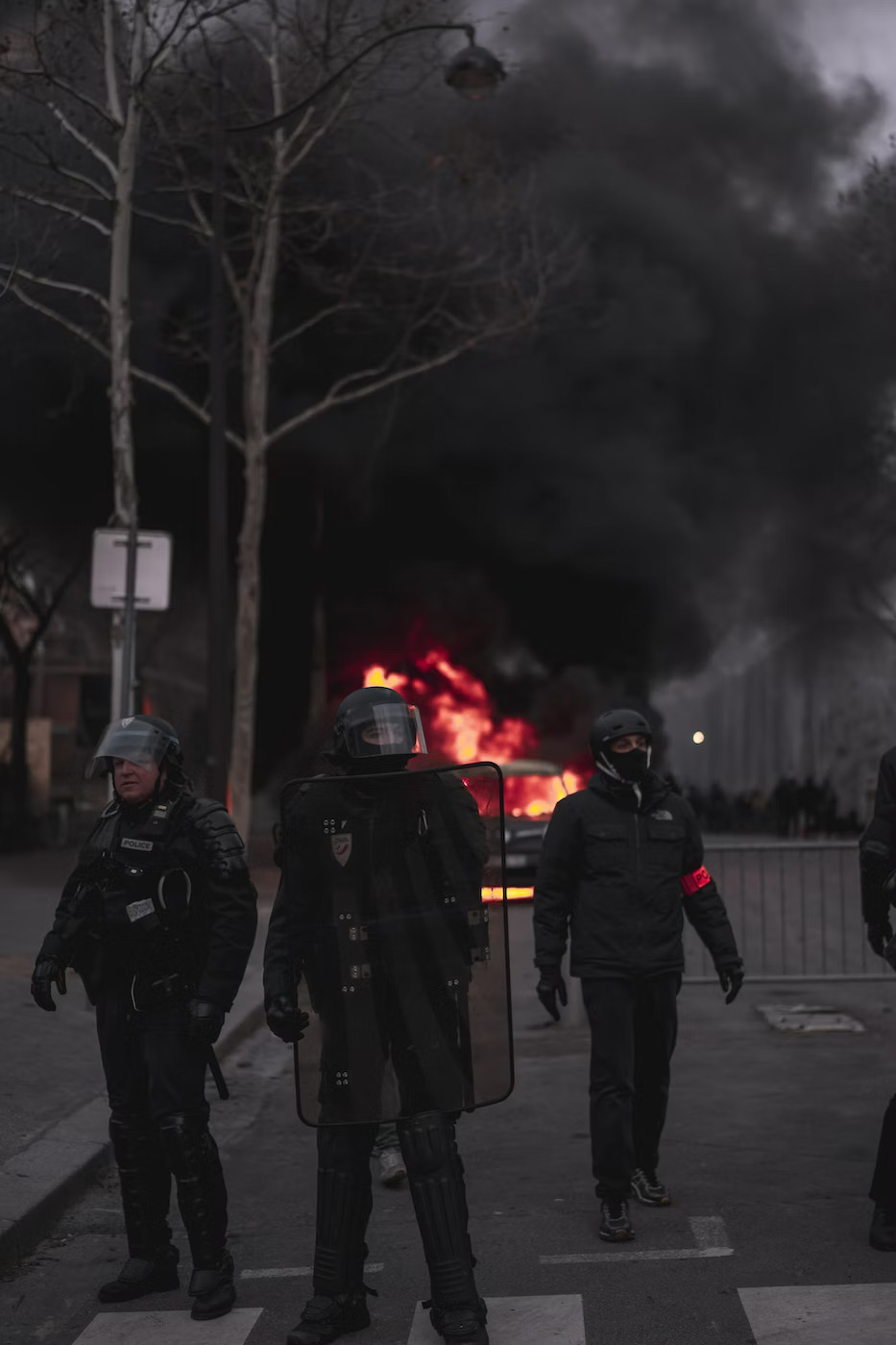Understanding Jihadis
Overview
There is no such thing as jihadi personality.
The majority of Jihadi are not psychiatric patients and the same statement would be true about them being psychopaths or intellectually challenged.
Are they victims of the larger social forces that use them as pawns? When assessed psychiatrically, most of them will not fit the strict diagnostic criteria of psychopathic personality. We may find that some of the jihadis fall into one or more of the above categories. It is difficult to predict what percentage of them would have none of the above issues, as we don’t have any studies here to quote.
It may be true that some of them will have low levels of intelligence but obviously, that won’t be applicable to other terrorists as some of them are highly intelligent, more intelligent than an average person.
There may be other types of jihadis as well, as mentioned below: –
- Uninformed or misinformed jihadis – ideologically driven.
- Suicidal and Psychotic jihadis – suicidal who want to die anyway irrespective of whether they are jihadis or not, and psychotic who want to kill because of their delusional ideas perceiving others as threats or enemies who should be killed, before they themselves get killed.
- Deeply unhappy individuals – It can also be due to very intense pain that is greater than any happiness in life that they can think of. This is seen in the family members and offspring of terrorists. The pain of living is much greater than the pain of dying, and they choose the latter as a solution to the problem. It can also be due to the loyalty to the family member who has died as a result of injustice.
In my clinical practice, I see a lot of borderline personality disorder patients who cut themselves with sharp objects regularly. Their psychological pain is much deeper than the pain of physical injury they are causing to themselves, and the physical pain distracts them from the greater psychological pain.
- Child Jihadis – one who is not grown up enough to use logic. They haven’t got their faculty of logical analysis fully developed. It’s like a child who knows only his parents and he doesn’t have the ability to compare his parents with other adults in the community, and he has no way to judge whether his parents were right or wrong. Due to this identification, they end up believing that what the father was saying was the right thing to do, they don’t have the ability to even apply logic to make sense of the situation. When you ask him why did you carry this out, they will simply say because my father or so and so told me and I respect that person.
- Pseudo-altruistic jihadi – identifying with a cause greater than our own lives is deeply ingrained in the psyche of all of us. It is the spiritual or altruistic or divine side of our being, and we all are capable of operating from that space. However, only very few of us can bring that into action in our lives. The fearlessness of a spiritual or revolutionary leader, a soldier, a journalist, or a charity worker who put their lives at risk in war-torn areas is an example of that. They are putting their lives at risk for the benefit of others as the cause is greater than the value of their own single life. Kamikaze pilots can fit into this category of altruistic category, but many of them were fearful teenagers who were pushed into the job of flying a plane to their death. Very much like teenage Russian soldiers having to fight not knowing the deeper meaning of the war. They were simply obeying the orders from above.
The difference between a jihadi and these altruistic people could be in the killing of the innocent by a jihadi and what causes they identify with.
The solution is prevention, and we can’t prevent people from becoming jihadis unless we understand what caused them to choose this path in the first place, not just the external factors but the internal ones. There aren’t many scientific studies examining the internal factors.
Psychological research into Jihadi behavior is still in its infancy. There aren’t many research studies directly assessing the psyche of jihadis. Most of the reports are based on the published literature, anecdotal reports, study of their police interviews and writings, and armchair speculations.
A study of the psychology of Jihadis will not only help the police and the army but our lawmakers and politicians, social workers, and psychotherapist.
Law enforcement agencies try to understand the social forces that make use of vulnerable adults, and the culprits are sent for a psychiatric assessment only when they show obvious signs of psychosis, depression, suicidal thoughts, etc, but the majority of jihadis don’t undergo psychological or psychiatrist assessment which can shed some light on the reasons why they become jihadis.
The Kashmir Scene:
It would an error to assume that terrorism has largely been eliminated from J&K. It may be that many of the terrorists are lying low waiting for their time to come. The situation is like an unruly classroom where children become quiet as soon as a very strict teacher walks in, but as soon as he is gone, the class becomes unruly again.
Contrary to the above, if we have a teacher who can convince the students that focusing on studies and extracurricular activities is better than creating a nuisance in the classroom which would be self-harming. It is quite possible that the class will still be disciplined when this teacher is gone. I am not implying here that the tough hand of law would be inappropriate, in fact, a combination of the two may be required.
There are three ways of changing behavior –
- Fear of the negative consequences.
- The lure of the positive gains.
- A change of heart unrelated to the about two for one’s inner peace.
We need all three, as the improvement resulting from the first two may not be lasting. A permanent change of heart will occur only when one can clearly see what the right action is, and can understand that it will result in them being at peace with themselves.
To understand the ideology behind radicalization, we will need to understand its origin. It is generally a dream of freedom or revolution of a handful of politicians, a dream handed down to the current generation. At times it is based on the perception of superiority of the land and its people by the masses or by just a few politicians. At other times, the conflict is kept alive by external forces and it is not the cry of the masses.
Addressing the issue of radicalization at the ideological level is also important and the job cannot be done by the military or the army. Even politicians will need the help of historians, thinkers, writers, political analysts, and mental health professionals.
The UNESCO radicalization is defined by these three points /numbers:
- The individual person’s search for fundamental meaning, origin, and return to a root ideology – Ideology driven
- The individual is part of the group’s adoption of a violent form of expansion of root ideologies and related oppositionist objectives – Get a sense of belonging to a group which is more important than personal happiness.
- Polarisation of the social space in the collective construction of a threatened ideal “us” against “them,” where the others are dehumanized by a process of scapegoating – inner conflicts are externalized into others, and the “we and them” scenario is created and the undesirable is projected onto them
A New York Police Department report, which systematically examined the 9/11 incident in-depth and studied Al Qaeda’s influence, has identified the following four stages: –
The four phases of radicalization:
- Pre-radicalization
- Self-identification
- Indoctrination
- Jihadisation
Histories of child abuse and trauma and themes of perceived injustice and humiliation often are prominent in terrorist biographies but they do not really explain terrorism, as many with similar histories do not become terrorists.
Psychological causes of Jihadi –
- perceived injustice
- need for identity
- need for belonging.
Early theories that had focussed on hostility toward one’s parents, ideology may not be the precursor to radicalization.
Terrorist profiles of the white supremacist outfit KKK, PLO, or IRA in the UK are going to be different from Kashmiri militants, and we should not transplant solutions borrowed from Israel, America, or England.
Before we apply the solutions that have worked elsewhere in a given community, we need to make sure that the malady is like the other situations where the solutions were applied.
Apart from the socio-political and religious reasons, it is important to study the individual factors as well.
Who is vulnerable?
- Rejected by peers, immigrants, outcasts, victims or witnesses of race or religious hate crime, conflict with family or religious beliefs, identity confusion and discomfort about their place in society, personal crisis, recent religious conversions, been in contact with recruiters, perception of injustice, a feeling of failure, rejection of civil life, a series of traumatic events, prison population, etc.
There are all sorts of terrorists across the globe: –
The radical groups for right-wing ideologies such as neofascism, new Nazism, white nationalism, Patriot/sovereign citizens, and white power skinhead gangs.
Left-wing terrorism – they had overthrown the capitalist systems and replaced them with Marxist-Leninist or socialist societies – the IRA, and PLO had included communist and socialist ideology into their policies.
De-radicalization: The following 4Ps of counter-terrorism have been used in dealing with terrorism:-
- Prevent
- Pursue
- Protect
- Prepare
In the UK prevention strategies have been employed in schools – Prevent toolkit has been used in Sunderland schools – they promote British values i.e., democratic values, individual liberty, mutual respect, study and tolerance of different faiths, safeguarding children and adults vulnerable to being drawn in terrorism, training teacher in being aware.
Are they victims of the larger social forces that use them as pawns? When assessed psychiatrically, most of them will not fit the strict diagnostic criteria of psychopathic personality. We may find that some of the jihadis fall into one or more of the above categories. It is difficult to predict what percentage of them would have none of the above issues, as we don’t have any studies here to quote.
It may be true that some of them will have low levels of intelligence but obviously, that won’t be applicable to other terrorists as some of them are highly intelligent, more intelligent than an average person.
There may be other types of jihadis as well, as mentioned below: –
- Uninformed or misinformed jihadis – ideologically driven.
- Suicidal and Psychotic jihadis – suicidal who want to die anyway irrespective of whether they are jihadis or not, and psychotic who want to kill because of their delusional ideas perceiving others as threats or enemies who should be killed, before they themselves get killed.
- Deeply unhappy individuals – It can also be due to very intense pain that is greater than any happiness in life that they can think of. This is seen in the family members and offspring of terrorists. The pain of living is much greater than the pain of dying, and they choose the latter as a solution to the problem. It can also be due to the loyalty to the family member who has died as a result of injustice.
In my clinical practice, I see a lot of borderline personality disorder patients who cut themselves with sharp objects regularly. Their psychological pain is much deeper than the pain of physical injury they are causing to themselves, and the physical pain distracts them from the greater psychological pain.
- Child Jihadis – one who is not grown up enough to use logic. They haven’t got their faculty of logical analysis fully developed. It’s like a child who knows only his parents and he doesn’t have the ability to compare his parents with other adults in the community, and he has no way to judge whether his parents were right or wrong. Due to this identification, they end up believing that what the father was saying was the right thing to do, they don’t have the ability to even apply logic to make sense of the situation. When you ask him why did you carry this out, they will simply say because my father or so and so told me and I respect that person.
- Pseudo-altruistic jihadi – identifying with a cause greater than our own lives is deeply ingrained in the psyche of all of us. It is the spiritual or altruistic or divine side of our being, and we all are capable of operating from that space. However, only very few of us can bring that into action in our lives. The fearlessness of a spiritual or revolutionary leader, a soldier, a journalist, or a charity worker who put their lives at risk in war-torn areas is an example of that. They are putting their lives at risk for the benefit of others as the cause is greater than the value of their own single life. Kamikaze pilots can fit into this category of altruistic category, but many of them were fearful teenagers who were pushed into the job of flying a plane to their death. Very much like teenage Russian soldiers having to fight not knowing the deeper meaning of the war. They were simply obeying the orders from above.
The difference between a jihadi and these altruistic people could be in the killing of the innocent by a jihadi and what causes they identify with.
The solution is prevention, and we can’t prevent people from becoming jihadis unless we understand what caused them to choose this path in the first place, not just the external factors but the internal ones. There aren’t many scientific studies examining the internal factors.
Psychological research into Jihadi behavior is still in its infancy. There aren’t many research studies directly assessing the psyche of jihadis. Most of the reports are based on the published literature, anecdotal reports, study of their police interviews and writings, and armchair speculations.
A study of the psychology of Jihadis will not only help the police and the army but our lawmakers and politicians, social workers, and psychotherapist.
Law enforcement agencies try to understand the social forces that make use of vulnerable adults, and the culprits are sent for a psychiatric assessment only when they show obvious signs of psychosis, depression, suicidal thoughts, etc, but the majority of jihadis don’t undergo psychological or psychiatrist assessment which can shed some light on the reasons why they become jihadis.
The Kashmir Scene:
It would an error to assume that terrorism has largely been eliminated from J&K. It may be that many of the terrorists are lying low waiting for their time to come. The situation is like an unruly classroom where children become quiet as soon as a very strict teacher walks in, but as soon as he is gone, the class becomes unruly again.
Contrary to the above, if we have a teacher who can convince the students that focusing on studies and extracurricular activities is better than creating a nuisance in the classroom which would be self-harming. It is quite possible that the class will still be disciplined when this teacher is gone. I am not implying here that the tough hand of law would be inappropriate, in fact, a combination of the two may be required.
There are three ways of changing behavior –
- Fear of the negative consequences.
- The lure of the positive gains.
- A change of heart unrelated to the about two for one’s inner peace.
We need all three, as the improvement resulting from the first two may not be lasting. A permanent change of heart will occur only when one can clearly see what the right action is, and can understand that it will result in them being at peace with themselves.
To understand the ideology behind radicalization, we will need to understand its origin. It is generally a dream of freedom or revolution of a handful of politicians, a dream handed down to the current generation. At times it is based on the perception of superiority of the land and its people by the masses or by just a few politicians. At other times, the conflict is kept alive by external forces and it is not the cry of the masses.
Addressing the issue of radicalization at the ideological level is also important and the job cannot be done by the military or the army. Even politicians will need the help of historians, thinkers, writers, political analysts, and mental health professionals.
The UNESCO radicalization is defined by these three points /numbers:
- The individual person’s search for fundamental meaning, origin, and return to a root ideology – Ideology driven
- The individual is part of the group’s adoption of a violent form of expansion of root ideologies and related oppositionist objectives – Get a sense of belonging to a group which is more important than personal happiness.
- Polarisation of the social space in the collective construction of a threatened ideal “us” against “them,” where the others are dehumanized by a process of scapegoating – inner conflicts are externalized into others, and the “we and them” scenario is created and the undesirable is projected onto them
A New York Police Department report, which systematically examined the 9/11 incident in-depth and studied Al Qaeda’s influence, has identified the following four stages: –
The four phases of radicalization:
- Pre-radicalization
- Self-identification
- Indoctrination
- Jihadisation
Histories of child abuse and trauma and themes of perceived injustice and humiliation often are prominent in terrorist biographies but they do not really explain terrorism, as many with similar histories do not become terrorists.
Psychological causes of Jihadi –
- perceived injustice
- need for identity
- need for belonging.
Early theories that had focussed on hostility toward one’s parents, ideology may not be the precursor to radicalization.
Terrorist profiles of the white supremacist outfit KKK, PLO, or IRA in the UK are going to be different from Kashmiri militants, and we should not transplant solutions borrowed from Israel, America, or England.
Before we apply the solutions that have worked elsewhere in a given community, we need to make sure that the malady is like the other situations where the solutions were applied.
Apart from the socio-political and religious reasons, it is important to study the individual factors as well.
Who is vulnerable?
- Rejected by peers, immigrants, outcasts, victims or witnesses of race or religious hate crime, conflict with family or religious beliefs, identity confusion and discomfort about their place in society, personal crisis, recent religious conversions, been in contact with recruiters, perception of injustice, a feeling of failure, rejection of civil life, a series of traumatic events, prison population, etc.
There are all sorts of terrorists across the globe: –
The radical groups for right-wing ideologies such as neofascism, new Nazism, white nationalism, Patriot/sovereign citizens, and white power skinhead gangs.
Left-wing terrorism – they had overthrown the capitalist systems and replaced them with Marxist-Leninist or socialist societies – the IRA, and PLO had included communist and socialist ideology into their policies.
De-radicalization: The following 4Ps of counter-terrorism have been used in dealing with terrorism:-
- Prevent
- Pursue
- Protect
- Prepare
In the UK prevention strategies have been employed in schools – Prevent toolkit has been used in Sunderland schools – they promote British values i.e., democratic values, individual liberty, mutual respect, study and tolerance of different faiths, safeguarding children and adults vulnerable to being drawn in terrorism, training teacher in being aware.





